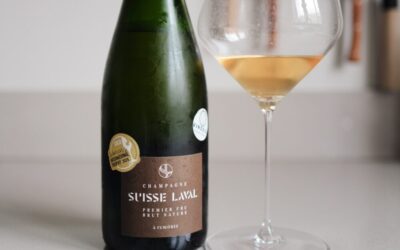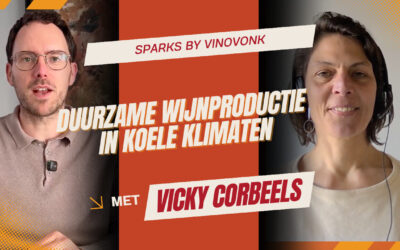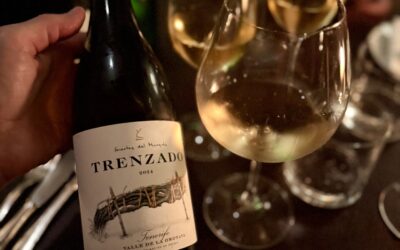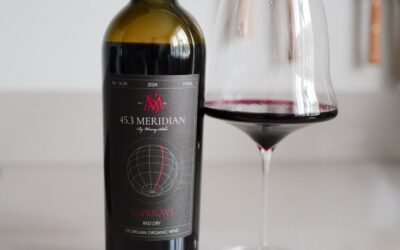When Jeen Akkerman sent me a package from The Winepack for my “Sparks by VinoVonk” podcast, I’ll admit I was skeptical. Another bag-in-box wine? But the claims were bold: 80% less CO2 emissions, 30 days fresh after opening, and 100% recyclable packaging. As someone who’s tasted countless wines and explored industry trends, I knew this conversation would either validate or debunk some serious claims about the future of wine packaging.
What I discovered during our recording wasn’t just another sustainable packaging story—it was a glimpse into how the entire wine industry could transform its environmental impact while actually improving quality and value for consumers.
The Environmental Reality Check
The wine industry faces an uncomfortable truth that most of us prefer to ignore: traditional packaging creates a massive environmental footprint. During our interview, Jeen shared a statistic that stopped me in my tracks—a single truck can transport twice as much wine in bag-in-box format compared to glass bottles. For an industry shipping millions of bottles globally, this efficiency difference represents a significant potential for emission reductions.
But Jeen’s motivation wasn’t abstract environmental concern—it was deeply personal. Watching his two grandchildren play had sparked an uncomfortable realization about the planet they would be leaving behind. “We all know that if we don’t take better care of our planet, the future looks less promising,” he told me, his voice carrying genuine concern that resonated beyond typical corporate sustainability speak.
This grandfather’s mission led to The Winepack’s founding three years ago with his son Auke, representing something I rarely encounter: a business truly born from environmental conscience rather than market opportunity. Yet their approach reveals broader possibilities for how quality wine production can align with environmental responsibility.
Confronting Industry Perceptions
During our conversation, Jeen was refreshingly honest about the perception challenge facing not just The Winepack but alternative packaging generally. In Northern European markets, bag-in-box wine carries a reputation ranging from mediocre to awful—and this stigma represents the industry’s biggest barrier to sustainable adoption.
“I once did extensive scientific research,” Jeen joked with me, “and made an important finding: if you put bad wine in bag-in-box, bad wine comes out. But if you put good wine in bag-in-box, good wine comes out.” This simple truth exposes how retailers have positioned alternative packaging as budget wine, creating negative associations that premium producers must overcome.
The challenge isn’t technical—it’s psychological. Most wine doesn’t benefit from glass packaging anyway. While fine wines, destined for cellar aging, require bottles, everyday drinking wines, which represent 90% of purchases, perform equally well in alternative formats. The industry’s packaging choices often reflect tradition and marketing rather than actual wine preservation needs.
Technology Meets Tradition
What surprised me most was learning about the sophisticated technology behind modern bag-in-box packaging. The Winepack utilizes 100% recyclable plastic bags without aluminum coatings, prioritizing environmental responsibility even when it results in a slightly reduced shelf life compared to metalized alternatives.
The filling process requires precise expertise that rivals traditional bottling. Whether using automated machines or mobile units, such as France’s “Le Camion Potion”—trucks equipped with professional filling equipment that travel between wineries—the key is to eliminate oxygen and introduce nitrogen gas to prevent oxidation.
This technology actually preserves wine better than opened bottles, which typically deteriorate within days. For someone who often has multiple bottles open during podcast recordings, this preservation advantage represents a genuine practical improvement over traditional packaging.
The Sourcing Revolution
One of the most fascinating aspects of our interview was learning about Jeen’s sourcing strategy, which reveals how sustainable packaging can support quality winemaking. Each January, he travels to the Biomillésime fair in Montpellier—Europe’s premier organic wine trade show.
“It’s a wonderfully democratic fair,” he explained. “Everyone just has a table. There’s no difference in booth size.” This egalitarian approach perfectly aligns with the sustainable packaging philosophy, supporting passionate, environmentally conscious winemakers regardless of their marketing budgets.
Rather than working through large importers who view alternative packaging as risky experimentation, The Winepack goes directly to producers. Every wine on Vivino maintains a rating of 3.7 stars or higher, and crucially, these same wines are available in traditional bottles, proving they’re not inferior blends or leftover stock.
The Tasting That Changed Everything
The real test came when we opened the Domaine Villemain Sauvignon Blanc during our recording. I expected competent wine—what I got was a genuinely impressive Loire Valley expression. The nose immediately showed classic Sauvignon Blanc character: crisp citrus, green apple, subtle tropical notes, and beautiful floral elements. But there was something more—a purity and fullness that spoke to careful winemaking and proper preservation.
In the mouth, the wine revealed complexity that developed beautifully. Fresh and vibrant, yes, but with real depth and a persistent, elegant finish. This wasn’t just good bag-in-box wine—this was good wine, period. At approximately €10 per equivalent bottle when purchasing 3-liter packages, the value proposition became undeniable.
“If you take 10 euros and walk into a wine shop asking for a Loire Valley Sauvignon Blanc, you won’t get this quality,” I found myself saying during our tasting. That assessment wasn’t just podcast politeness—it was an honest, professional evaluation that revealed how sustainable packaging can actually enhance, rather than compromise, wine accessibility.

Practical Innovation for Modern Life
Beyond environmental benefits, alternative packaging offers practical advantages that traditional wine marketing often overlooks. The compact packaging fits easily in refrigerators, which is significant for urban consumers with limited space. A 3-liter package delivers four bottles’ worth of wine while occupying less space than two traditional bottles.
For restaurants serving wine by the glass, this technology eliminates waste and ensures consistent quality throughout service. Jeen revealed exciting plans for the hospitality industry’s expansion, though he acknowledged that fine dining establishments will likely resist alternative packaging for tableside service, where presentation rituals remain important.
The convenience factor particularly appeals to modern wine consumption patterns. Most wine gets consumed relatively quickly rather than cellared, making extended preservation capabilities more valuable than the aging potential for the majority of purchases.
The Industry’s Sustainable Future
What impressed me most about Jeen wasn’t just his environmental mission but his genuine openness to succession and competition. “I’d love it if in five years I only need to visit Montpellier while someone else takes over occasionally,” he told me. This isn’t about building a wine empire—it’s about proving sustainable practices can deliver quality while protecting our planet.
The Winepack represents broader possibilities for transformation in the wine industry. As climate change intensifies, the focus on carbon footprints puts producers under increasing pressure to balance tradition with environmental responsibility. Success stories like The Winepack suggest that sustainability and quality aren’t competing priorities—they can enhance each other.
However, widespread adoption requires overcoming entrenched perceptions and distribution challenges. Retailers must move beyond positioning alternative packaging as budget wine, while producers need the courage to challenge traditional presentation expectations.
The revolution won’t happen overnight, but conversations like my interview with Jeen reveal how individual passionate producers can drive industry-wide change. Sometimes, the most radical innovation involves rediscovering that exceptional wine experiences don’t require excessive packaging.
Are you curious about sustainable wine packaging? Listen to my full conversation with Jeen Akkerman on “Sparks by VinoVonk” and discover how The Winepack is quietly revolutionizing quality wine delivery while protecting our planet.






